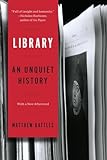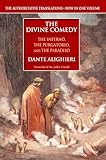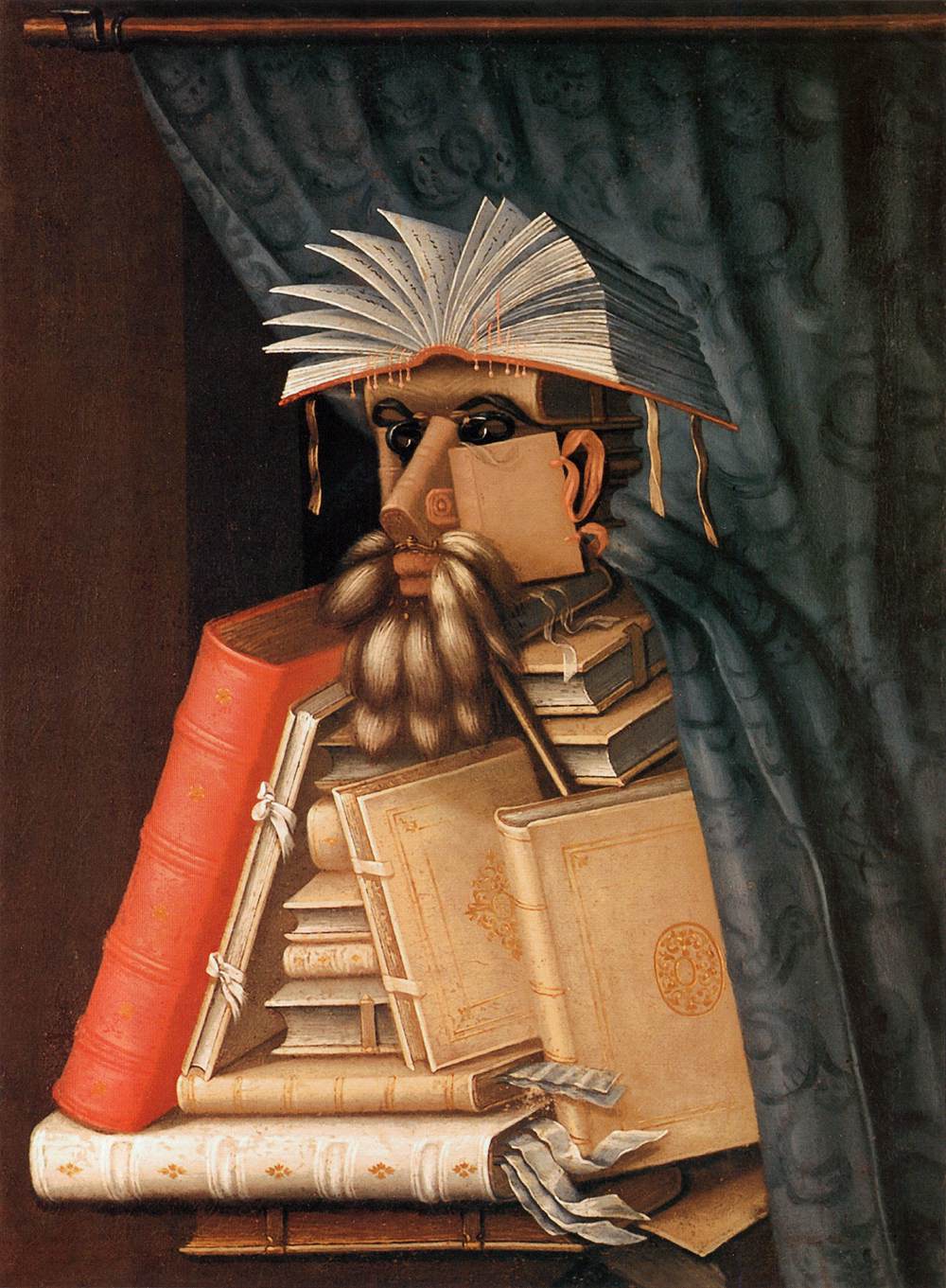“Homer on parchment pages! / The Iliad and all the adventures/ Of Ulysses, for of Priam’s kingdom, / All locked within a piece of skin / Folded into several little sheets!”
—Martial, Epigrammata (c. 86-103)
“A good book is the precious life-blood of a master spirit, embalmed and treasured up on purpose to a life beyond life.”
-—John Milton, Aeropagitica (1644)



At Piazza Maunzio Bufalini 1 in Cesena, Italy, there is a stately sandstone building of buttressed reading rooms, Venetian windows, and extravagant masonry that holds slightly under a half-million volumes, including manuscripts, codices, incunabula, and print. Commissioned by Malatesta Novello in the 15th century, the Malatestiana Library opened its intricately carved walnut door to readers in 1454, at the height of the Italian Renaissance. The nobleman who funded the library had his architects borrow from ecclesiastical design: The columns of its rooms evoke temples, its seats the pews that would later line cathedrals, its high ceilings as if in monasteries.

Committed humanist that he was, Novello organized the volumes of his collection through an idiosyncratic system of classification that owed more to the occultism of Neo-Platonist philosophers like Marsilio Ficino, who wrote in nearby Florence, or Giovanni Pico della Mirandola, who would be born shortly after its opening, than to the arid categorization of something like our contemporary Dewey Decimal System. For those aforementioned philosophers, microcosm and macrocosm were forever nestled into and reflecting one another across the long line of the great chain of being, and so Novello’s library was organized in a manner that evoked the connections of both the human mind in contemplation as well as the universe that was to be contemplated itself. Such is the sanctuary described by Matthew Battles in Library: An Unquiet History, where a reader can lift a book and test its heft, can appraise “the fall of letterforms on the title page, scrutinizing marks left by other readers … startled into a recognition of the world’s materiality by the sheer number of bound volumes; by the sound of pages turning, covers rubbing; by the rank smell of books gathered together in vast numbers.”
An awkward-looking yet somehow still elegant carved elephant serves as the keystone above one door’s lintel, and it serves as the modern library’s logo. Perhaps the elephant is a descendant of one of Hannibal’s pachyderms who thundered over the Alps more than 15 centuries before, or maybe the grandfather of Hanno, Pope Leo X’s pet—gifted to him by the King of Portugal—who would make the Vatican his home in less than five decades. Like the Renaissance German painter Albrecht Durer’s celebrated engraving of a rhinoceros, the exotic and distant elephant speaks to the concerns of this institution—curiosity, cosmopolitanism, and commonwealth.
It’s the last quality that makes the Malatestiana Library so significant. There were libraries that celebrated curiosity before, like the one at Alexandria whose scholars demanded that the original of every book brought to port be deposited within while a reproduction would be returned to the owner. And there were collections that embodied cosmopolitanism, such as that in the Villa of Papyri, owned by Lucius Calpurnius Piso Caesoninus, the uncle of Julius Caesar, which excavators discovered in the ash of Herculaneum, and that included sophisticated philosophical and poetic treatises by Epicurus and the Stoic Chrysopsis. But what made the Malatestiana so remarkable wasn’t its collections per se (though they are), but rather that it was built not for the singular benefit of the Malatesta family, nor for a religious community, and that unlike in monastic libraries, its books were not rendered into place by a heavy chain. The Bibliotheca Malatestiana would be the first of a type—a library for the public.
If the Malatestiana was to be like a map of the human mind, then it would be an open-source mind, a collective brain to which we’d all be invited as individual cells. Novella amended the utopian promise of complete knowledge as embodied by Alexandria into something wholly more democratic. Now, not only would an assemblage of humanity’s curiosity be gathered into one temple, but that palace would be as a commonwealth for the betterment of all citizens. From that hilly Umbrian town you can draw a line of descent to the Library Company of Philadelphia founded by Benjamin Franklin, the annotated works of Plato and John Locke owned by Thomas Jefferson and housed in a glass-cube at the Library of Congress, the reading rooms of the British Museum where Karl Marx penned Das Kapital (that collection having since moved closer to King’s Cross Station), the Boston Public Library in Copley Square with its chiseled names of local worthies like Ralph Waldo Emerson and Henry David Thoreau ringing its colonnade, and the regal stone lions who stand guard on Fifth Avenue in front of the Main Branch of the New York Public Library.
More importantly, the Malatestiana is the progenitor of millions of local public libraries from Bombay to Budapest. In the United States, the public library arguably endures as one of the last truly democratic institutions. In libraries there are not just the books collectively owned by a community, but the toy exchanges for children, the book clubs and discussion groups, the 12 Step meetings in basements, and the respite from winter cold for the indigent. For all of their varied purposes, and even with the tyrannical ascending reign of modern technology, the library is still focused on the idea of the book. Sometimes the techno-utopians malign the concerns of us partisans of the physical book as being merely a species of fetishism, the desire to turn crinkled pages labeled an affectation; the pleasure drawn from the heft of a hardback dismissed as misplaced nostalgia. Yet there are indomitably pragmatic defenses of the book as physical object—now more than ever.
For one, a physical book is safe from the Orwellian deletions of Amazon, and the electronic surveillance of the NSA. A physical book, in being unconnected to the internet, can be as a closed-off monastery from the distraction and dwindling attention span engendered by push notifications and smart phone apps. The book as object allows for a true degree of interiority, of genuine privacy that cannot be ensured on any electronic device. To penetrate the sovereignty of the Kingdom of the Book requires the lo-fi method of looking over a reader’s shoulder. A physical book is inviolate in the face of power outage, and it cannot short-circuit. There is no rainbow pinwheel of death when you open a book.
But if I can cop to some of what the critics of us Luddites impugn us with, there is something crucial about the weight of a book. So much does depend on a cracked spine and a coffee-stained page. There is an “incarnational poetics” to the very physical reality of a book that can’t be replicated on a greasy touch-screen. John Milton wrote in his 1644 Aeropagitica, still among one of the most potent defenses of free speech written, that “books are not absolutely dead things, but do contain a potency of life in them to be as active as that soul whose progeny they are.” This is not just simply metaphor; in some sense we must understand books as being alive, and just as it’s impossible to extricate the soul of a person from their very sinews and nerves, bones, and flesh, so too can we not divorce the text from the smooth sheen of velum, the warp and waft of paper, the glow of the screen. Geoffrey Chaucer or William Shakespeare must be interpreted differently depending on how they’re read. The medium, to echo media theorist Marshall McLuhan, has always very much been the message.
This embodied poetics is, by its sheer sensual physicality, directly related to the commonwealth that is the library. Battles argues that “the experience of the physicality of the book is strongest in large libraries”; stand amongst the glass cube at the center of the British Library, the stacks upon stacks in Harvard’s Widener Library, or the domed portico of the Library of Congress and tell me any differently. In sharing books that have been read by hundreds before, we’re privy to other minds in a communal manner, from the barely erased penciled marginalia in a beaten copy of The Merchant of Venice to the dog-ears in Leaves of Grass.
What I wish to sing of then is the physicality of the book, its immanence, its embodiment, its very incarnational poetics. Writing about these “contraptions of paper, ink, carboard, and glue,” Keith Houston in The Book: A Cover-to-Cover Exploration of the Most powerful Object of our Time challenges us to grab the closest volume and to “Open it and hear the rustle of paper and the crackle of glue. Smell it! Flip through the pages and feel the breeze on your face.” The exquisite physicality of matter defines the arid abstractions of this thing we call “Literature,” even as we forget that basic fact that writing may originate in the brain and may be uttered by the larynx, but it’s preserved on clay, papyrus, paper, and patterns of electrons. In 20th-century literary theory we’ve taken to call anything written a “text,” which endlessly confuses our students who themselves are privy to call anything printed a “novel” (regardless of whether or not its fictional). The text, however, is a ghost. Literature is the spookiest of arts, leaving not the Ozymandian monuments of architectural ruins, words rather grooved into the very electric synapses of our squishy brains.
Not just our brains though, for Gilgamesh is dried in the rich, baked soil of the Euphrates; Socrates’s denunciation of the written word from Plato’s Phaedrus was wrapped in the fibrous reeds grown alongside the Nile; Beowulf forever slaughters Grendel upon the taut, tanned skin of some English lamb; Prospero contemplates his magic books among the rendered rags of Renaissance paper pressed into the quarto of The Tempest; and Emily Dickinson’s scraps of envelope from the wood pulp of trees grown in the Berkshires forever entombs her divine dashes. Ask a cuneiform scholar, a papyrologist, a codicologist, a bibliographer. The spirit is strong, but so is the flesh; books can never be separated from the circumstances of those bodies that house their souls. In A History of Reading, Alberto Manguel confesses as much, writing that “I judge a book by its cover; I judge a book by its shape.”
Perhaps this seems an obvious contention, and the analysis of material conditions, from the economics of printing and distribution to the physical properties of the book as an object, has been a mainstay of some literary study for the past two generations. This is as it should be, for a history of literature could be written not in titles and authors, but from the mediums on which that literature was preserved, from the clay tablets of Mesopotamia to the copper filaments and fiber optic cables that convey the internet. Grappling with the physicality of the latest medium is particularly important, because we’ve been able to delude ourselves into thinking that there is something purely unembodied about electronic literature, falling into that Cartesian delusion that strictly separates the mind from the flesh.


Such a clean divorce was impossible in earthier times. Examine the smooth vellum of a medieval manuscript, and notice the occasionally small hairs from the slaughtered animals that still cling to William Langland’s Piers Plowman or Dante’s The Divine Comedy. Houston explains that “a sheet of parchment is the end product of a bloody, protracted, and physical process that begins with the death of a calf, lamb, or kid, and proceeds thereafter through a series of grimly anatomical steps until parchment emerges at the other end,” where holding up to the light one of these volumes can sometimes reveal “the delicate tracery of veins—which, if the animal was not properly bled upon its slaughter, are darker and more obvious.” It’s important to remember the sacred reality that all of medieval literature that survives is but the stained flesh of dead animals.
Nor did the arrival of Johannes Guttenberg’s printing press make writing any less physical, even if was less bloody. Medieval literature was born from the marriage of flesh and stain, but early modern writing was culled from the fusion of paper, ink, and metal. John Man describes in The Gutenberg Revolution: How Printing Changed the Course of History how the eponymous inventor had to “use linseed oil, soot and amber as basic ingredients” in the composition of ink, where the “oil for the varnish had to be of just the right consistency,” and the soot which was used in its composition “was best derived from burnt oil and resin,” having had to be “degreased by careful roasting.” Battles writes in Palimpsest: A History of the Written Word that printing is a trade that bears the “marks of the metalsmith, the punch cutter, the machinist.” The Bible may be the word of God, but Guttenberg printed it onto stripped and rendered rags with keys “at 82 percent lead, with tin making up a further 9 percent, the soft, metallic element antimony 6 percent, and trace amounts of copper among the remainder,” as Houston reminds us. Scripture preached of heaven, but made possible through the very minerals of the earth.
Medieval scriptoriums were dominated by scribes, calligraphers, and clerics; Guttenberg was none of these, rather a member of the goldsmith’s guild. His innovation was one that we can ascribe as a victory to that abstract realm of literature, but fundamentally it was derived from the metallurgical knowledge of how to “combine the supple softness of lead with the durability of tin,” as Battles writes, a process that allowed him to forge the letter matrices that fit into his movable printing-press. We may think of the hand-written manuscripts of medieval monasteries as expressing a certain uniqueness, but physicality was just as preserved in the printed book, and, as Battles writes, in “letters carved in word or punched and chased in silver, embroidered in tapestry and needlepoint, wrought in iron and worked into paintings, a world in which words are things.”
We’d do well not to separate the embodied poetics of this thing we’ve elected to call the text from a proper interpretation of said text. Books are not written by angels in a medium of pure spirit; they’re recorded upon wood pulp and we should remember that. The 17th-century philosopher Rene Descartes claimed that the spirit interacted with the body through the pineal gland, the “principal seat of the soul.” Books of course have no pineal gland, but we act as if text is a thing of pure spirit, excluding it from the gritty matter upon which it’s actually constituted. Now more than ever we see the internet as a disembodied realm, the heaven promised by theologians but delivered by Silicon Valley. Our libraries are now composed of ghosts in the machine. Houston reminds us that this is an illusion, for even as you read this article on your phone, recall that it is delivered by “copper wire and fiber optics, solder and silicon, and the farther ends of the electromagnetic spectrum.”
Far from disenchanting the spooky theurgy of literature, an embrace of the materiality of reading and writing only illuminates how powerful this strange art is. By staring at a gradation of light upon dark in abstracted symbols, upon whatever medium it is recorded, an individual is capable of hallucinating the most exquisite visions; they are able to even experience the subjectivity of another person’s mind. The medieval English librarian Richard de Bury wrote in his 14th-century Philobiblon that “In books I find the dead as if they were alive … All things are corrupted and decay in time; Saturn ceases not to devour the children that he generates; all the glory of the world would be buried in oblivion, unless God had provided mortals with the remedy of books.”
If books are marked by their materiality, then they in turn mark us; literature “contrived to take up space in the head and in the world of things,” as Battles writes. The neuroplasticity of our mind is set by the words that we read, our fingers cut from turned pages and our eyes strained from looking at screens. We are made of words as much as words are preserved on things; we’re as those Egyptian mummies who were swaddled in papyrus printed with lost works of Plato and Euripides; we’re as the figure in the Italian Renaissance painter Giuseppe Arcimboldo’s 1566 The Librarian [above], perhaps inspired by those stacks of the Malatestiana. In that uncanny and beautiful portrait Arcimboldo presents an anatomy built from a pile of books, the skin of his figure the tanned red and green leather of a volume’s cover, the cacophony of hair a quarto whose pages are falling open. In the rough materiality of the book we see our very bodies reflected back to us, in the skin of the cover, the organs of the pages, the blood of ink. Be forewarned: to read a book as separate from the physicality that defines it is to scarcely read at all.
Image: Wikimedia Commons


















